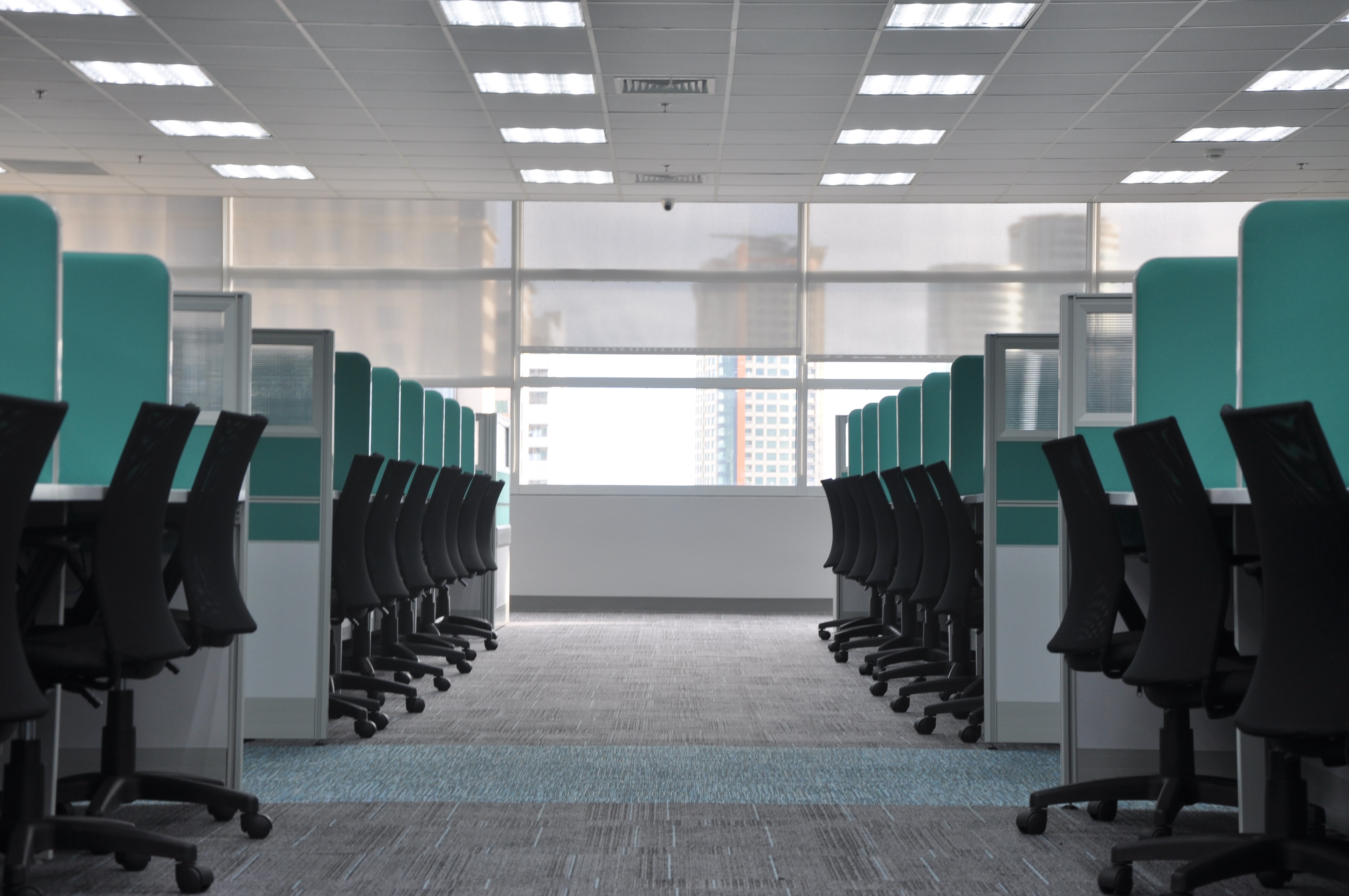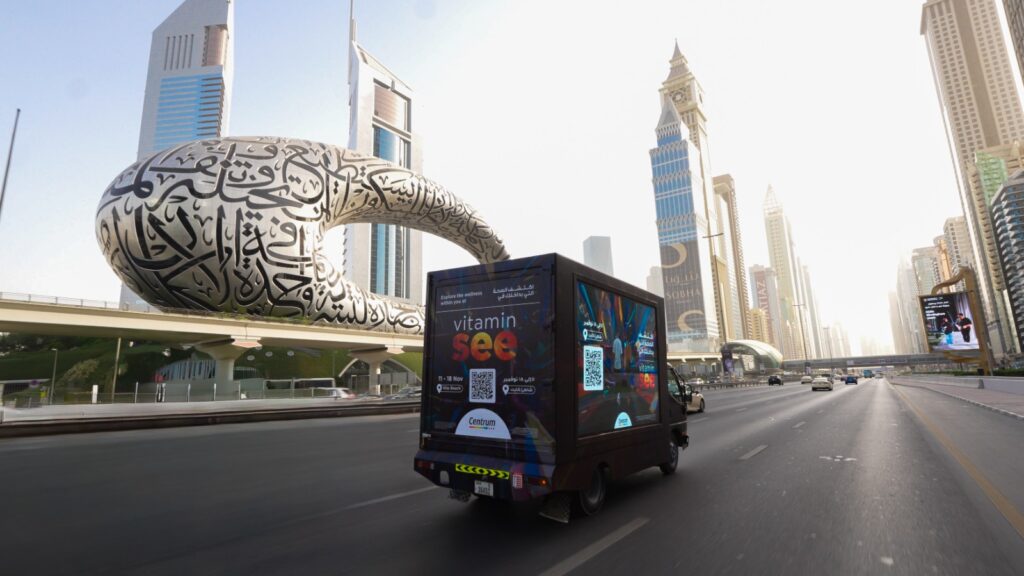Everyone has been discussing and debating on what the future of work will look like this year and in the years to come. Well, the Ericsson Consumer and Industry Lab decided to take it a notch further and study the possibility of a potential future reality where digital technolog could interact with our senses of sight, sound, taste, smell and touch. The report surveyed over 8,400 white collar workers who are early adopters of AR, VR or virtual assistants from 16 countries, representing around 133 million people, about their expectations of the future workspace.
The concept of a dematerialized office
Imagine that by 2030 it has become commonplace to have a lifestyle involving working and socializing totally in virtual realms without ever physically leaving home. We've seen the manifestation of the idea it in cartoons such as The Jetsons and in movies such as Blade Runner and they were made in the 90's. Fast forward to 2019, this idea still seemed to be extremely far fetched from reality. But in early 2020, the COVID-19 pandemic struck in full force and the idea of working and socializing from home was no longer a theoretical proposition. To the contrary, for many of the world’s office workers, it was suddenly the new reality.
This ‘new normal’ involves long workdays in front of a laptop in video meetings with colleagues and business relations. The internet has become a working lifeline, and it has functioned surprisingly well. But something was missing. There wasn't any technology to make up for the presence and immersion of the physical world.
For a digital meeting to be as interactive as the real thing, communications technology would need to take a big leap forward. And it would involve much more than better video meetings. It would have to enable the experience of collaborating in the same room with colleagues – which is a reason why interest in AR/VR technology has grown rapidly over the last six months. But even that would only be going half the way.
During isolation people everywhere are rediscovering the importance of the smells and the flavors and the sheer physicality of the locations they normally frequent and do business in. In fact, the pandemic has created a tipping point for what employees could expect of the future digital office. Realistic immersion means going beyond video and sound, beyond AR and VR; it also means digitally communicating touch, taste, smell and the feeling of heat or cold. According to Ericsson Research's vision – in a decade from now, advanced technology and 5G networks could enable such a full internet of senses.
Office work will not go back to the way it was before the pandemic. Instead, employees will spend more time working digitally and this drives the need for future technologies on a scale and at a pace that was unimaginable only a year ago. Rather than just letting us pull up a virtual computer screen in thin air, the experience could become all-inclusive, covering coffee breaks, social experiences and a digital commute. Behold, the idea of a dematerialized office.
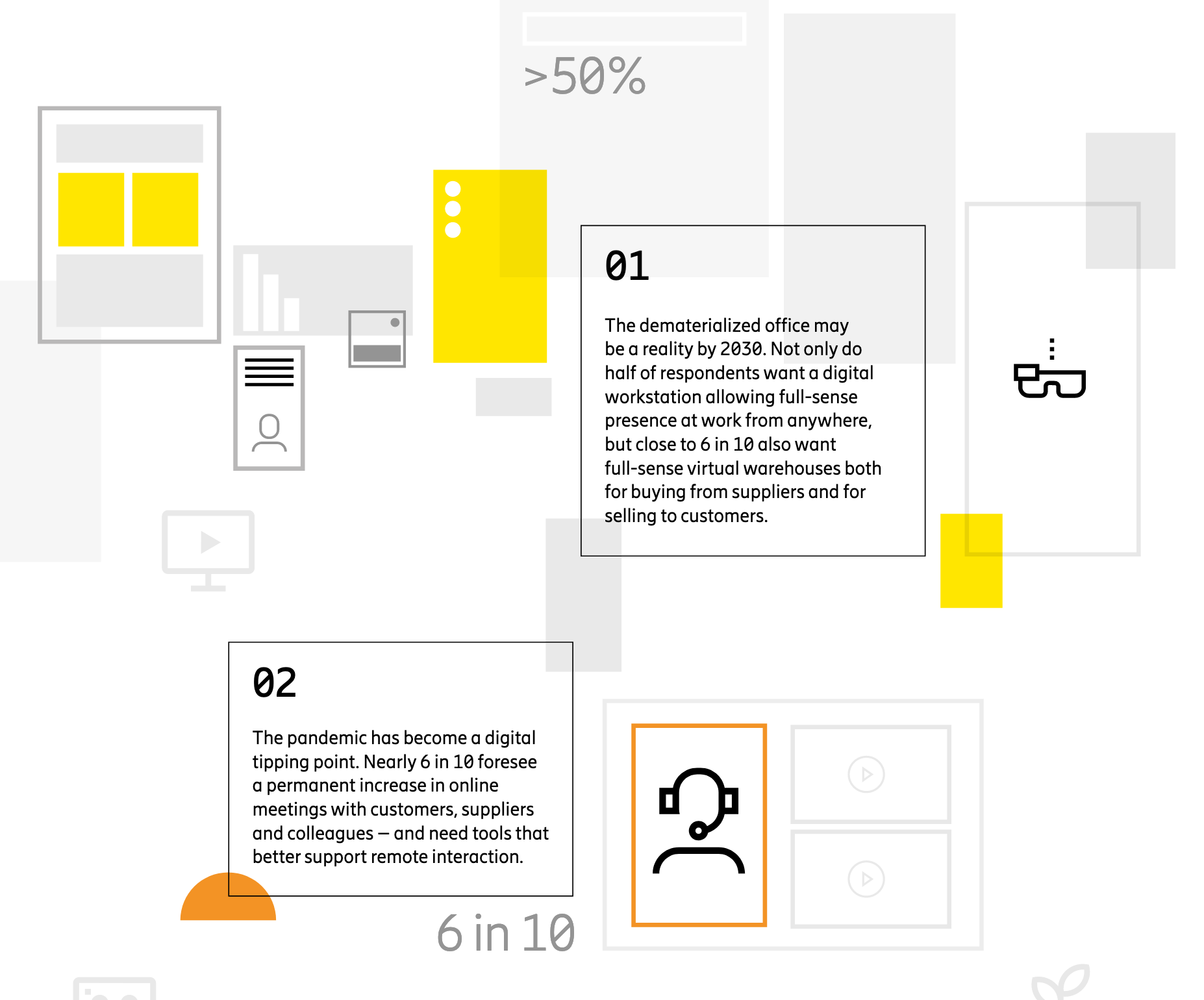
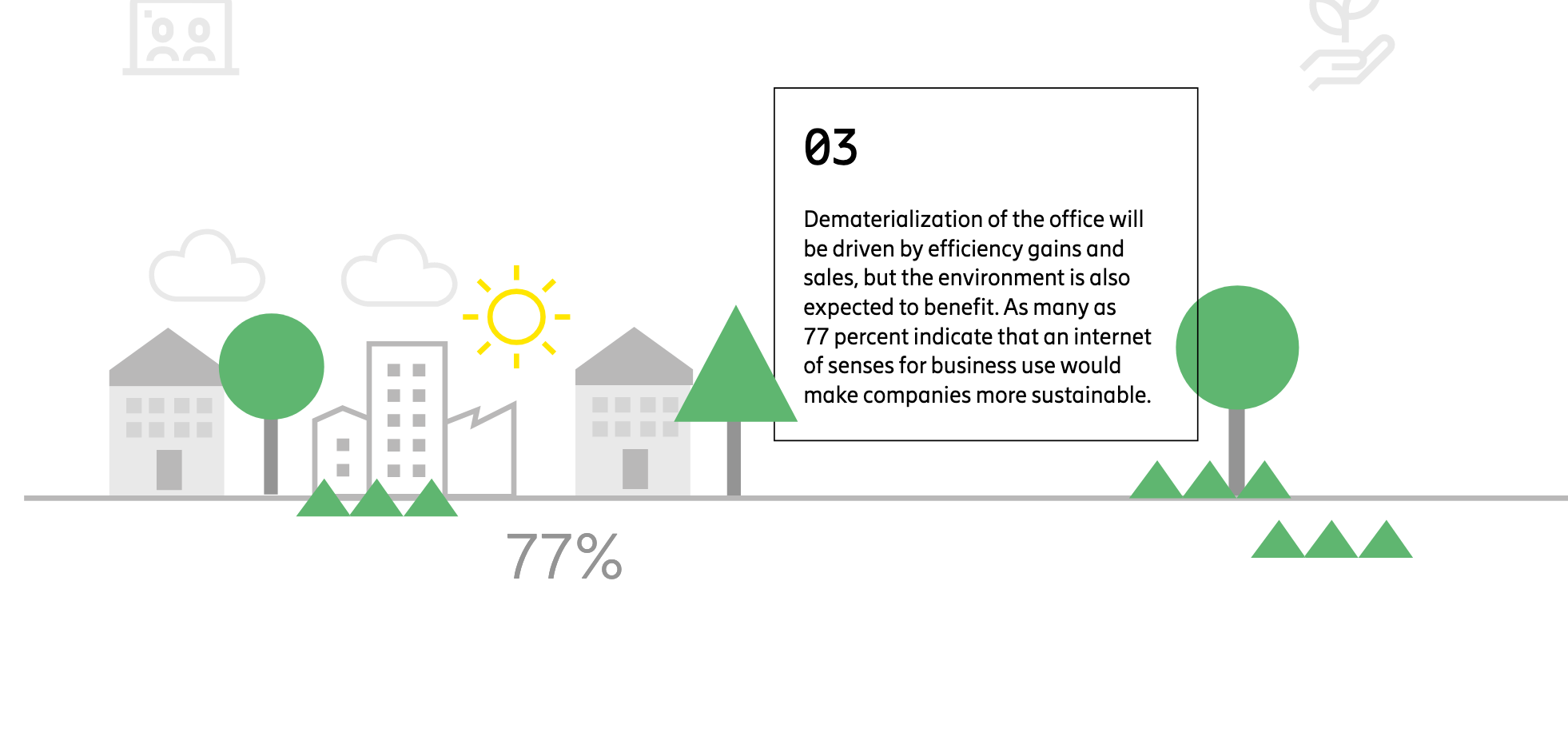
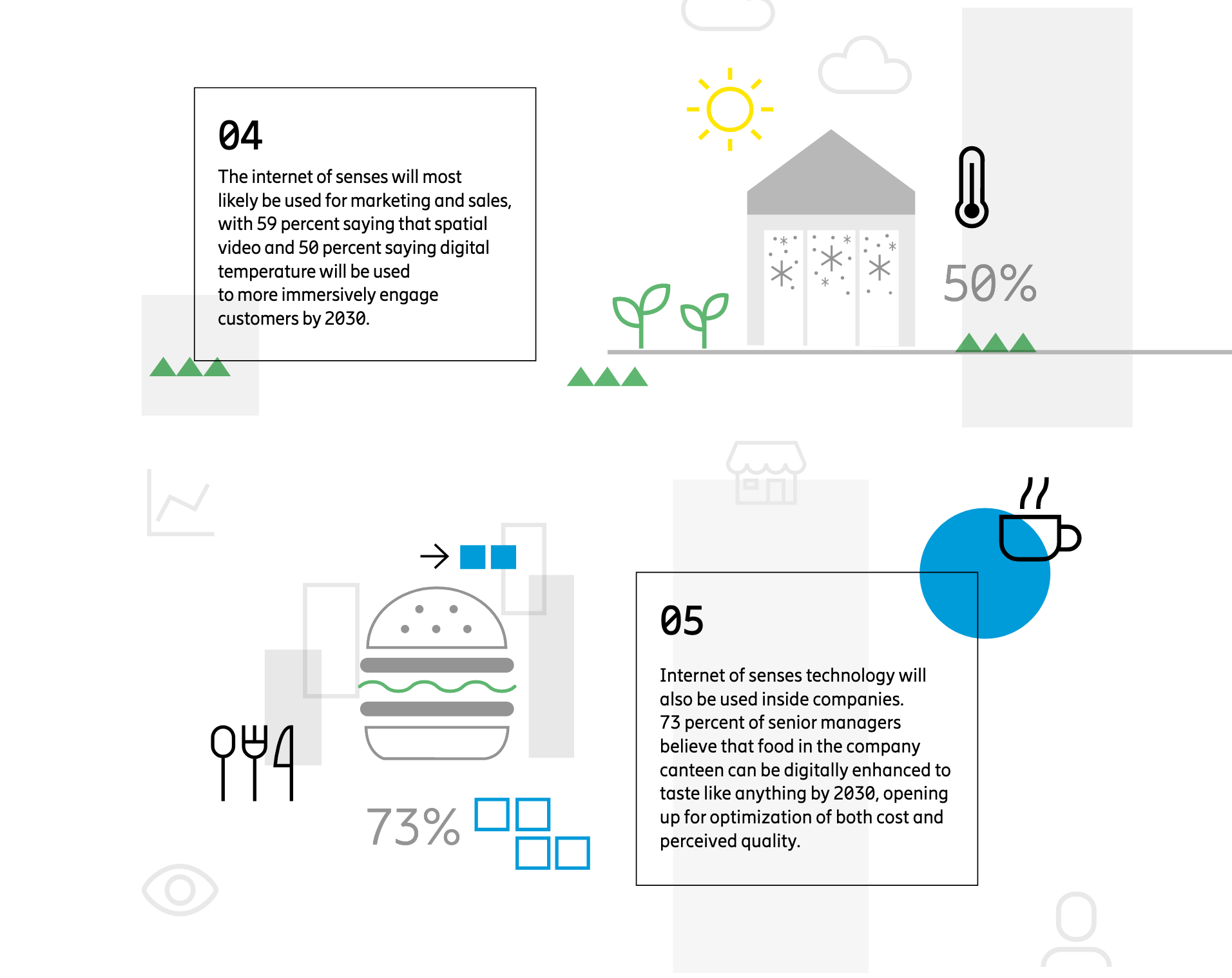
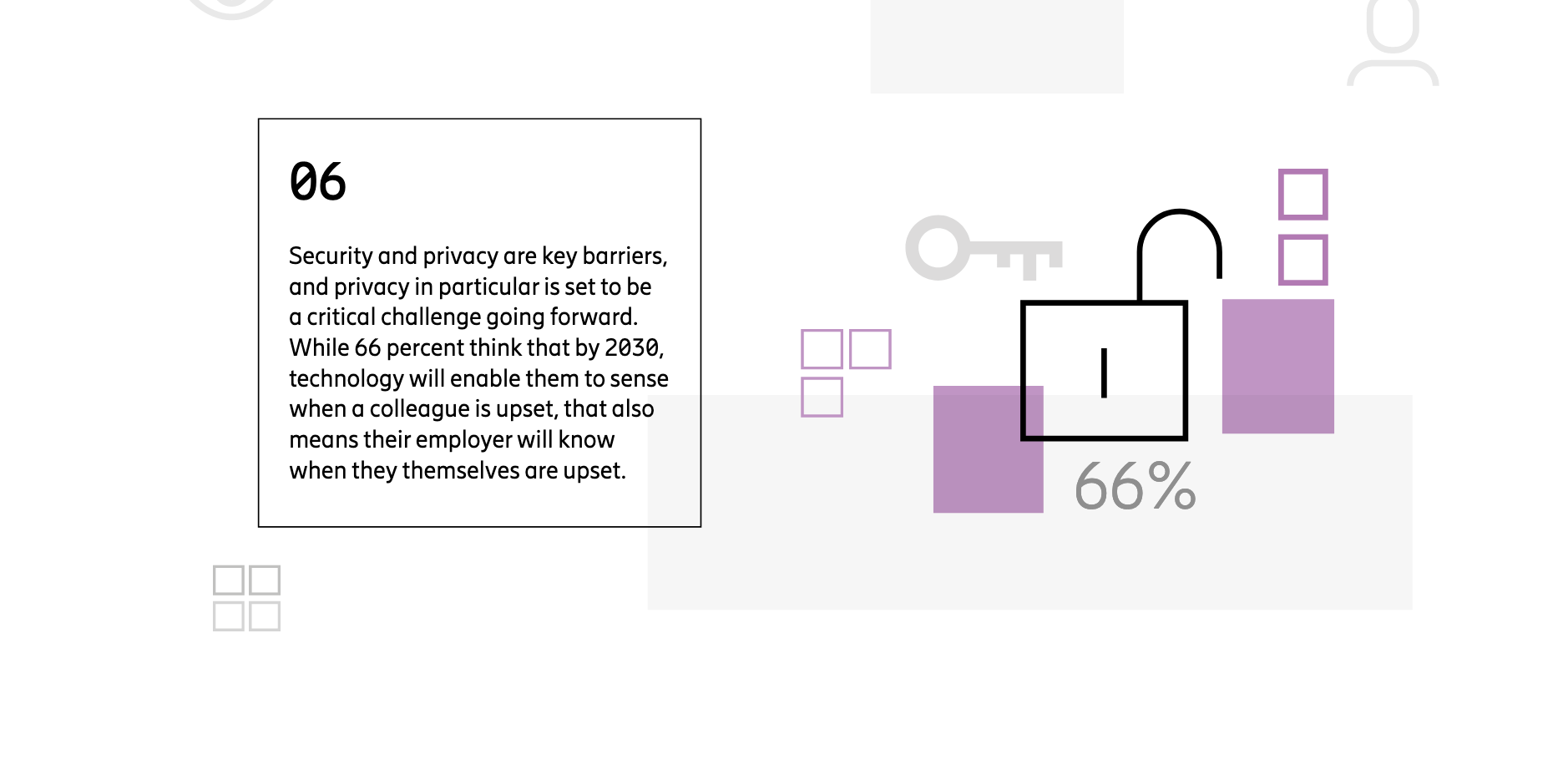
The internet of senses goes to work
Working digitally today means emails, digital reports, and connecting from home via online platforms. But a decade from now, digital work life is bound to be fundamentally different. By 2030, your laptop may have been replaced by a digital workstation that allows for full virtual presence anywhere. That would mean that not only do your colleagues appear and sound totally real, but you could also use anything in the room, and everything would feel real to the touch and smell right.
Interest in a fully immersive office experience, where all sensory experiences are completely digitally interactive, is primarily driven by those who already use AR/VR on at least a weekly basis. The fact that 58% of respondents are interested in a full-sense digital office is probably due to their current experiences, which give them an idea of what could be possible going forward. While the current generation of AR/VR is perceived by many as not being attractive, this might change once the technology has matured and is more convenient to use.
Virtual interaction with clients and colleagues
While having a digital office may be a basic requirement a decade from now, work is about so much more. Specifically, it involves interactions with suppliers, customers, and with other colleagues. When it comes to selling, providing immersive full-sense sales environments that allow for completely natural-feeling interaction with prospective buyers will be crucial. The same goes for suppliers, where prospects can assess products in a virtual warehouse and try out all functions digitally, as well as judge quality of materials, sense the weight and feel surface textures.
Team building will colleagues will be extremely important in the future, where employees do not meet physically anymore. AR/VR team retreats would be an innovative way to build team spirit. For example, imagine going with your colleagues on a digital team-building trip to the ancient Roman city of Pompeii, walk its streets, taste ancient street food and experience a traditional bath.
The pandemic has become a digital tipping point
The priorities and needs of employees have shifted since the global outbreak of COVID-19, leading to a higher interest in engaging with all senses online.
 One reason for this fast-forward to the future effect is most definitely the pandemic. With nearly six in 10 believing that it will lead to an increase in online meetings with customers, as well as with suppliers, and finally with colleagues, there is a need for tools that better support remote interaction.
One reason for this fast-forward to the future effect is most definitely the pandemic. With nearly six in 10 believing that it will lead to an increase in online meetings with customers, as well as with suppliers, and finally with colleagues, there is a need for tools that better support remote interaction.
After having spent the better part of a year bent over a work laptop at home, constantly engaged in video meetings, and facing challenges with disturbances in their home environments, many employees have probably realized that while connectivity is more important than ever before, digital meetings need to evolve before they become as good as the real thing. The pandemic has in fact created a digital tipping point.
The sustainable dematerialized office
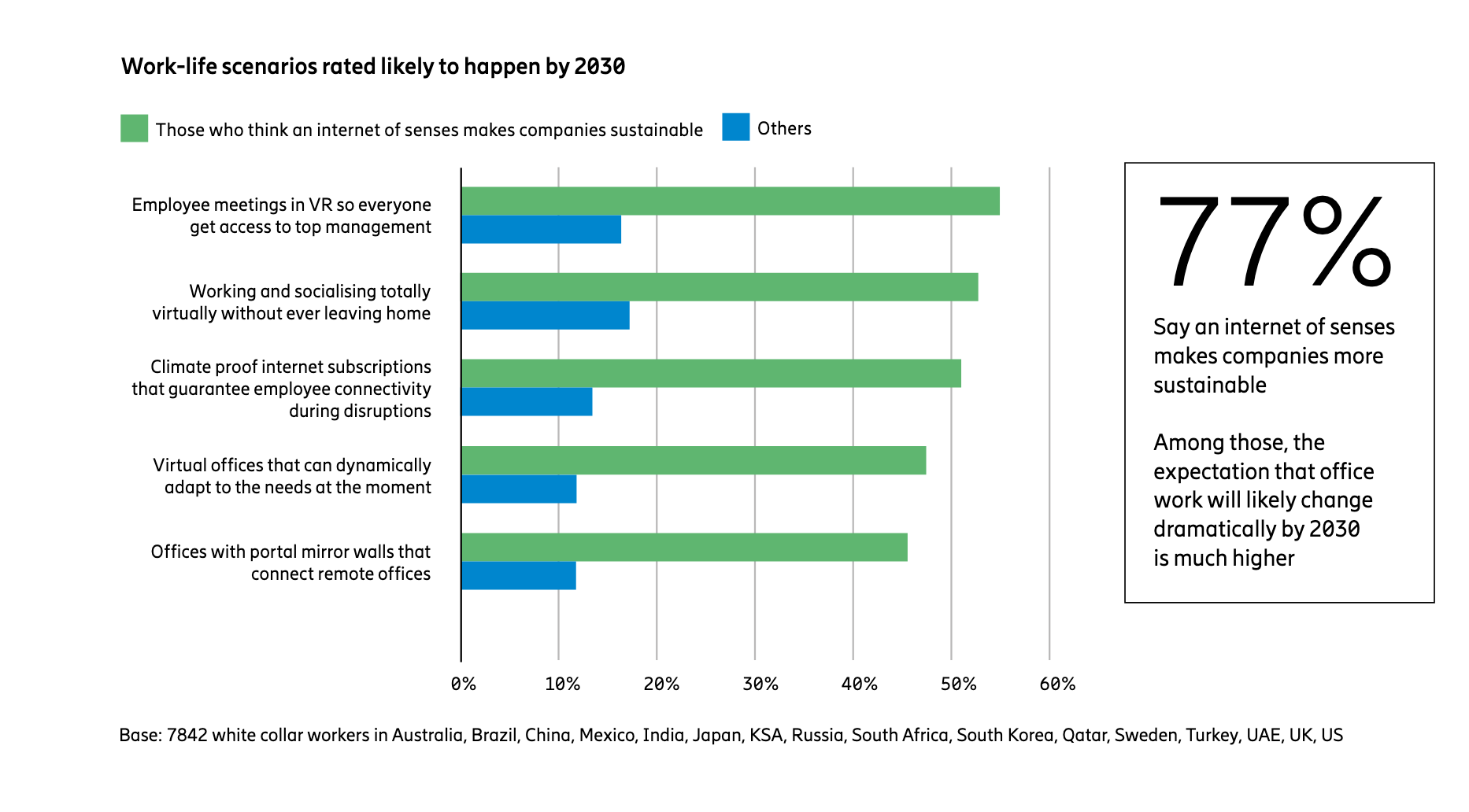
Only 23% of respondents selected climate benefits as an adoption driver for the internet of senses in business use. While this may mean that we should not expect companies to self-regulate when it comes to the environment, there are nevertheless substantial positive side effects with digitalization in this respect. As many as 77% indicate that an internet of senses for business use would make companies more sustainable.
Among those, the expectation that office work will likely dramatically digitalize by 2030 is also much higher than among the 23% who do not see any sustainability merits with the internet of sense. Having a dematerialized office obviously does not mean that physical places will cease to exist. Instead, it offers the opportunity for employees not to be disadvantaged in their work, regardless of where they are – at home, in a community workspace, or in the traditional office. Regardless of location, they will have an all-inclusive work experience that extends to fully participating in coffee breaks, workshops, team building activities and everything else that a normal workday entails
Security and privacy are key barriers
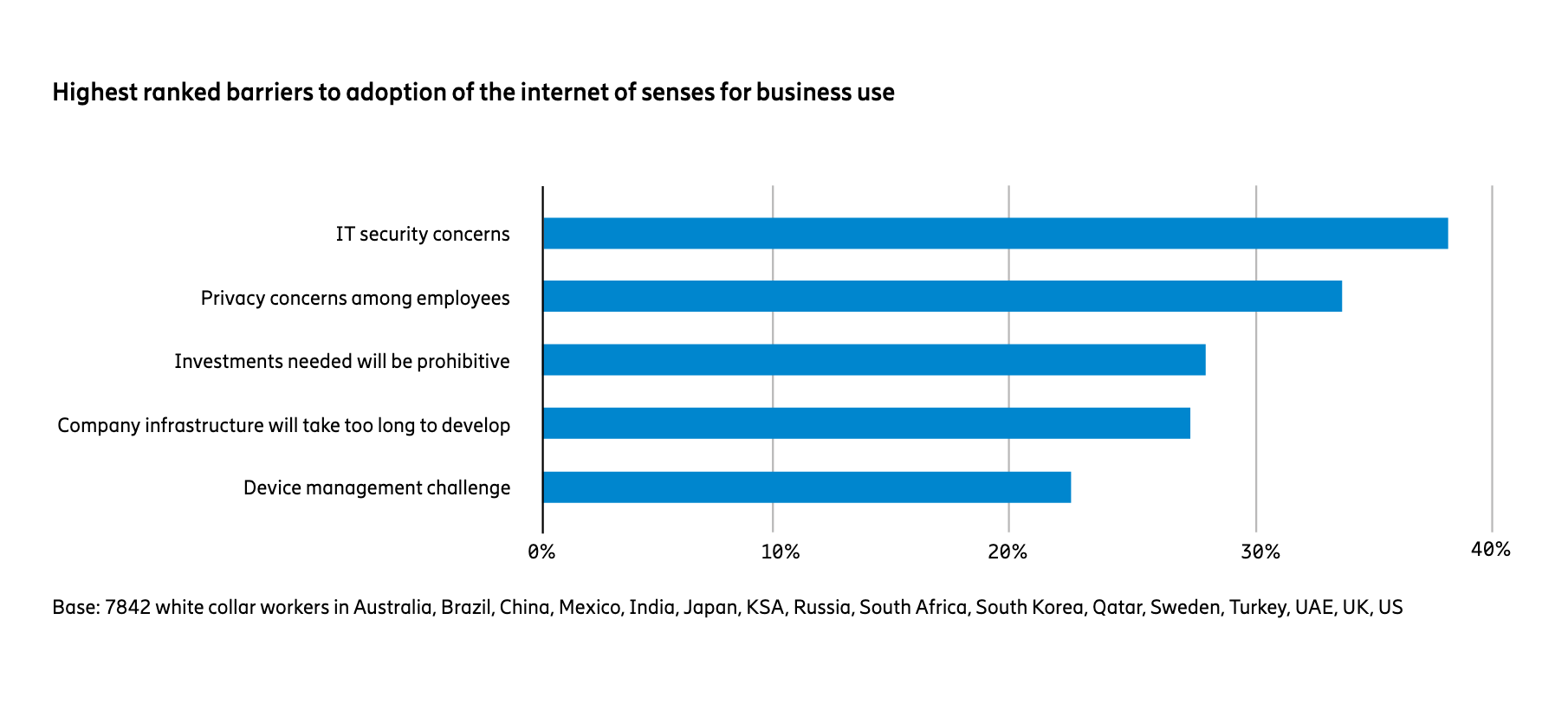
Privacy is ranked as the second most important barrier both for consumer use in 2019 and for enterprise use in 2020. Once digital interaction moves beyond sound and vision to incorporate all our senses, and potentially also enables functionality such as thought control of devices, the avenues for fraud, manipulation and identity theft will grow exponentially. Although the challenges may be different in the consumer and enterprise markets, the underlying concerns relate very much to the basic experience of what it means to be a human being.
The future we imagined a decade ago and romanticized with on film is finally starting to gain momentum. A decade from now, I could be in a beach in Tahiti and attend a virutal meeting as a holograph discussing what's happening in the world. Sounds exciting, don't you think?

